
Costa del sol bjuder på många dina utflyktsmål.
Läs om mina förslag på vackra bergsturer.
Välkommen till min webbsida som handlar om trivsamma platser i Europa, utflykter i Andalusien och sköna promenader i Stockholm.
Klicka på det som intresserar dig!
Trevlig läsning
Green houses along the coast
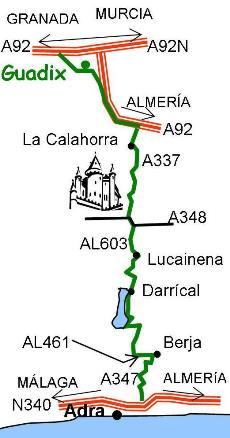
GUADIX AND SIERRA NEVADA
A92, 3 km south (north: exit Guadix; south: exit 288)
SUBTERRANEAN CAVES AND SOARING MOUNTAINS
Guadix lies in the middle of a depression in the valley at the foot of Sierra Nevada, surrounded by the most bizarre mountain formations, designed to stimulate the imagination.
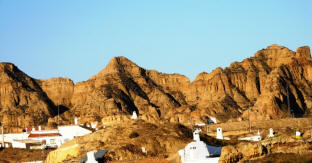
Believe it or not, but this dried-out, eroded plateau was once – millions of years ago - two great lakes. When these lakes dried out and the earth came into contact with the air and was exposed to erosion and earthquakes, the most eccentric landscape was formed. Wide cliffs consisting of giant shards of rock rise like a city wall around Guadix, and inside this wall little hillocks and rock knolls crop up everywhere. The area has an arid appearance, but the lower layers of soil are in fact fed with water seeping down from the Sierra Nevada, collecting in the muddy basin that was once the bottom of the lake. This has created good agricultural conditions and also brought about a most peculiar form of cave habitation.
CAVES HEWN OUT OF THE ROCK
The only proof of a bustling life among these hills are the whitewashed house façades climbing up the slopes and odd little white chimneys sticking up here and there. Behind the façades are actually ordinary Spanish “houses” with whitewashed walls but without any windows at the back. Living in a cave here has many advantages. The special clay out of which the caves are hewn reacts like cement when exposed to air and mixed with water. The caves are waterproof and dry, keeping an even temperature of around 18 degrees Celsius, summer- as well as wintertime. An extension is easily accomplished by taking a pickaxe and spade to the cave wall, provided, of course, your neighbour does not live immediately next door! An eerie silence prevails, rather welcome in these noisy times.
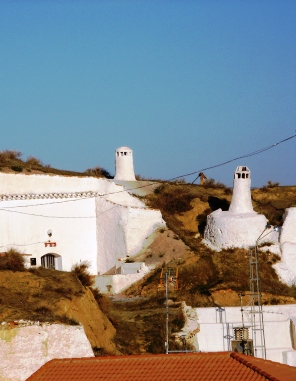
A CHANGING TOWN
However, the town centre itself is anything but silent. It is in fact a bit of a disaster. Repair work and traffic noise create a constant din and the exhaust fumes linger and remain in the narrow streets. So – what to do in all this confusion? The best thing would be to check in at the Hotel Comercio if it is getting towards evening and let them take care of the car. Otherwise just try to get a parking space close to the old town and then set off on foot to explore it. The town is still a bit shabby and many a genteel old building is in need of restoration. Quite a lot has already been done but it will take some time before the work is completed. The cathedral is a true jewel, rising high above all else. The monastery church of Santiago shows off a beautiful Sheffield plate portal and the graceful arcades at Plaza de la Constitución are impressive. Several handsome palaces frame the squares of the town and the ruins of the old city wall and fortress tell of a martial past.
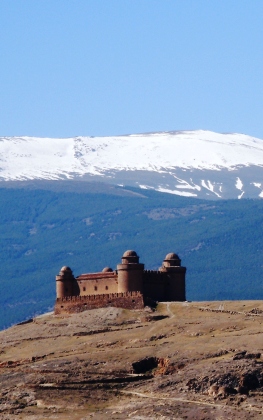
HISTORICAL OVERVIEW
People have occupied this area since the Palaeolithic Age, indeed many different races and tribes have lived here throughout history. But it was Julius Caesar who founded the town of Guadix, partly as a domicile for retired Roman legionaries but also as a mining centre for the silver that was found in these mountains. When the Roman Empire fell, Guadix fell with it but experienced a revival during the reign of the Moors. Guadix then developed into a thriving town, famous for its silk industry and rich agriculture. In 1489, when the Christians finally conquered the Moors, the latter were driven out of the town and forced to go in search of new places to live in the mountains. It was then that the cave dwelling first began. But the Moors were not allowed to stay for long; fifty years later they were forced to flee to Morocco. At the same point in time a large number of Romans came from Egypt and took up residence in the empty caves. As Christianity was once more introduced, the bishopric which had originally been established in the country was reinstated and the Guadix citizens marked this event by building an enormous cathedral on the site of the old mosque. The building of this cathedral took all of 250 years to complete.
THE CAVE QUARTERS
Before leaving Guadix we take a walk through Barrio de las Cuevas, and have a look at the cave museum and the little cave chapel. Then we wander up to Cerro de la Bada, an outlook point with an incredible view over the cave quarter, the old town, the fertile depression in the valley and the surrounding mountains. Towards the south we have the Sierra Nevada’s mighty massif as a decorative backdrop towering above the surrounding countryside.
A SPECTACULAR TOUR THROUGH SIERRA NEVADA
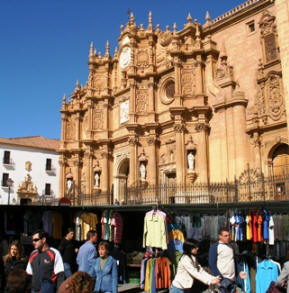
If you are on your way to the Costa del Sol, the weather is fine and you have some extra time I recommend an exciting detour through these fascinating mountains. If that is the case, head southwards for Adra on the coast motorway. Just before our little feat of mountaineering – for we are talking steep climbing here – we are greeted by Spain’s earliest Renaissance castle, Calahorra, sitting in splendid isolation high up on a hill. Its austere, medieval exterior can be seen for miles around, but behind the outer walls the Renaissance style blossoms, with an absolutely beautiful courtyard and a majestic staircase in Carrara marble.
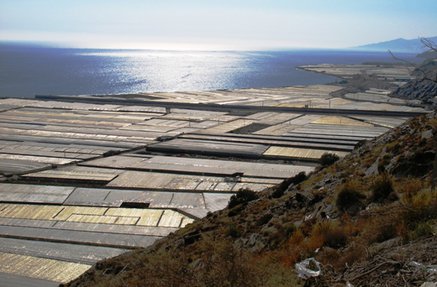
BEND AFTER SCARY BEND
And so we drive onwards and upwards along a narrow, meandering road. We cast one last glance at the valley and those “accordion mountains” before we arrive at the Rague pass (2041 metres above sea level). From here a good few mountain treks set out which you can join on ski or on foot – and Nordic walking sticks will always come in handy. The downward slope has now begun and we can breathe out again. We are driving on the right side of the road in every sense, having the ravines on our left for more or less all the long way down. Just as well, because it allows us to pay some attention to the breathtaking views coming up. The pine forests give way to a more exciting landscape with weird rock formations in pink sandstone alternating with shimmering, grey slate. It is a fantastic colour experience, seeing these two types of rock along the mountainsides bordering the ravines. Add to this the dark green of the pine trees, yellow mimosa and grey mountains in the distance – all under a clear blue sky! As if this was not enough, here comes the dam, Embalse de Beninar, its emerald green water glittering enchantingly. Shortly before the dam are two tumble-down ghost villages, Lucainena and Darrícal, arousing our imagination again. How on earth did people make a living up here in the wilderness? A few cultivated terraces, some goats among the crevices and the odd olive tree might give an indication. Then suddenly, in front of us, a sea of cultivated land, covered in plastic sheeting, spreads out at our feet and we are back in civilisation.